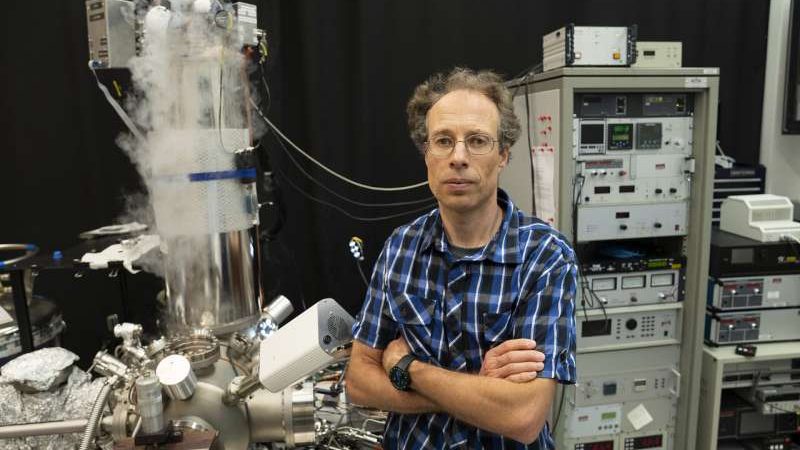In the vast theater of the microscopic world, one might ponder whether it is indeed feasible for the human intellect to behold the elusive atom—the infinitesimal building block of matter. Just as an artist seeks to capture the ineffable beauty of a fleeting moment within a canvas, scientists have embarked on an odyssey to unravel the mysteries that shroud these discreet units. The question then arises: has anyone truly observed an individual atom? This inquiry not only delves into the annals of scientific achievement but also elucidates the technological innovations that have made such observations possible. This exploration underscores not merely the triumph of human curiosity but also the intricate dance of nature, revealing that the smallest particles harbor an immense world of complexity.
At the heart of this narrative lies the definition of an atom—an entity so diminutive that its existence can scarcely be conceived without the aid of technology. Atoms are composed of protons, neutrons, and electrons, bound by fundamental forces, and can best be likened to miniature solar systems, where electrons orbit a nucleus akin to planets revolving around a sun. Such a metaphor captures the intricate dynamics of these particles, yet the challenge of observing them transcends mere conceptualization. The scale at which atoms operate is nearly unfathomable; a single strand of human hair is approximately 80,000 atoms thick. Hence, a stark reality emerges: while any attempt at direct observation may feel like peering into the abyss, innovative techniques have unraveled the veil of invisibility surrounding these atomic entities.
The journey to visualizing atoms commenced in earnest with the advent of advanced microscopy techniques. The scanning tunneling microscope (STM), conceived in the 1980s, surged forth as a groundbreaking instrument that enabled researchers to visualize individual atoms on surfaces. This device operates not by relying on light—an endeavor that falters at atomic dimensions—but rather employs quantum tunneling principles. When a conductive tip is brought in proximity to a conductive surface, electrons “tunnel” through the vacuum between them, crafting a topographical map at the atomic level. The implications of STM were profound; it not only permitted the visualization of atoms but also opened avenues for manipulating them with surgical precision.
However, the story of atomic observation is not solely rooted in the realms of instrumentation. The philosophical implications of such observations warrant scrutiny. To visualize an atom is to engage in an act of revelation—an unveiling of the hidden intricacies that govern the universe. Yet, this act also raises questions about the nature of reality itself. As scientists probe into the realm of the exceedingly small, they confront the peculiarities and paradoxes that emerge from quantum mechanics. The very act of measurement influences the properties of the atom, a phenomenon famously encapsulated in Heisenberg’s uncertainty principle, which asserts that the position and momentum of a particle cannot both be precisely determined simultaneously. Thus, observing an atom is akin to grasping a fleeting shadow—one can never fully own the experience without compromising it in some capacity.
The culmination of atomic observation reached a zenith in 1989 when researchers from IBM successfully utilized an STM to image individual atoms for the first time. They captured the image of a single iron atom on a surface of copper—an accomplishment that reverberated through the scientific community like a thunderclap. This watershed moment marked not just a technological triumph, but a philosophical awakening. It demanded that we reconceptualize our understanding of matter and its myriad manifestations. Each atom, previously shrouded in obscurity, was now rendered visible, revealing the elegant dance of electrons and the formidable mysteries of chemical bonding.
Moreover, the implications of observing atoms extend far beyond mere curiosity. In many respects, the microscopic realm offers a glimpse into the nature of existence itself. As researchers harness techniques like atomic force microscopy and cryo-electron tomography, they delve deeper into the realms of materials science, biology, and nanotechnology. The quest for understanding the atomic structure of proteins can unveil secrets pivotal to the development of new pharmaceuticals, while the manipulation of individual atoms can lead to advancements in quantum computing that foreshadow a technological renaissance.
As the exploration of atoms propels forward, the question remains: how does one reconcile the elegance of observing a solitary atom with the broader narrative of the cosmos? Atoms are the punctuation marks in the sentence of matter, grounding us in the physical world while simultaneously giving rise to complexities that compose the universe. Each glimpse into the atomic domain serves as a reminder that within the minuscule lies an interplay of forces and entities that shape the very fabric of reality.
In conclusion, the observation of individual atoms has transitioned from the realm of philosophical conjecture to a tangible reality, thanks to the relentless pursuit of knowledge and innovation in scientific methodologies. While capturing an atom may be akin to glimpsing a single star in the expansive tapestry of night, such observations inspire awe and invigorate the quest for understanding. Thus, the next time one gazes into the cosmos or contemplates the composition of matter, let it serve as a reminder that the infinitesimal does indeed possess the key to profound truths, echoing our eternal pursuit of enlightenment amid the mysteries of existence.












